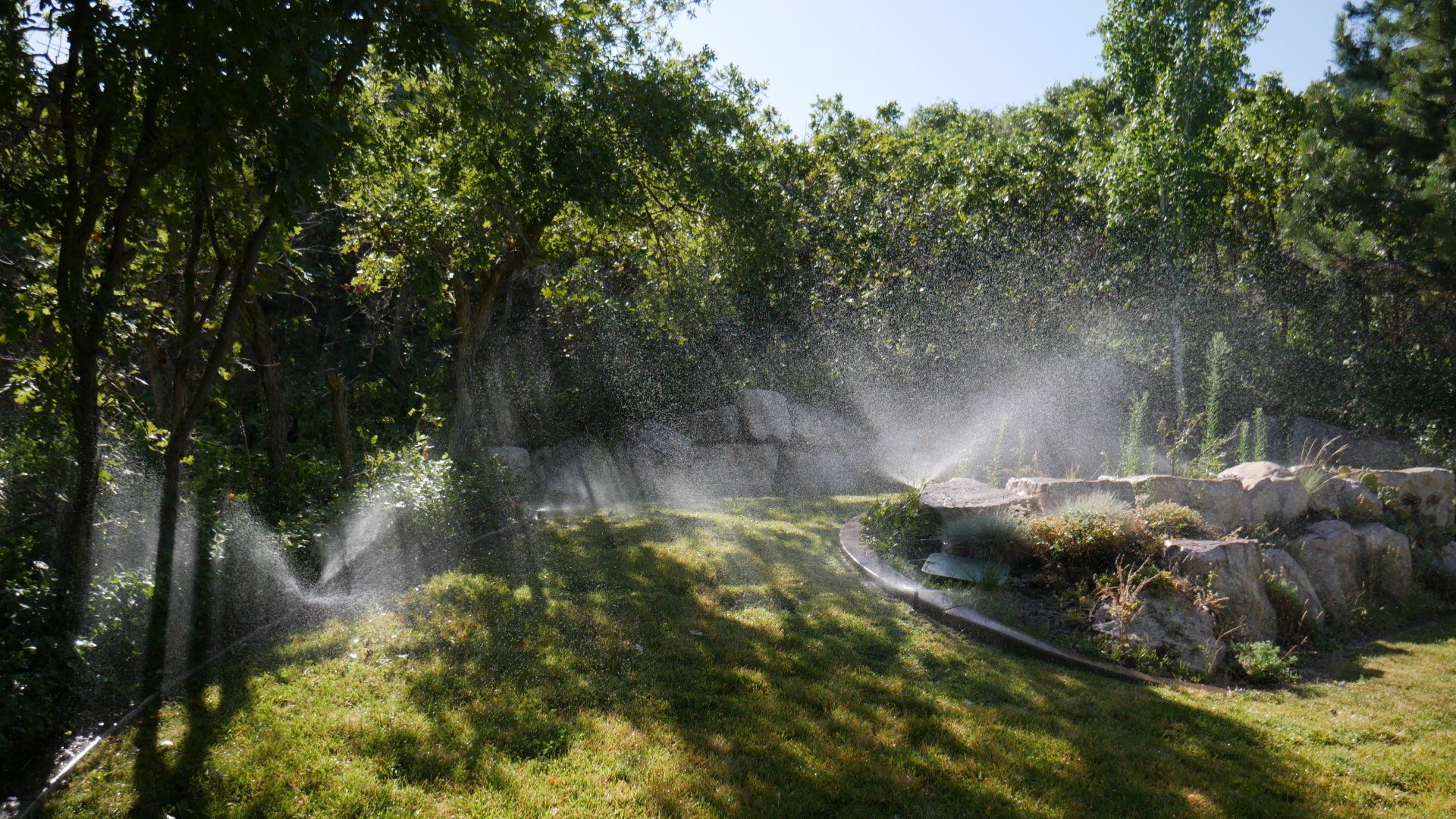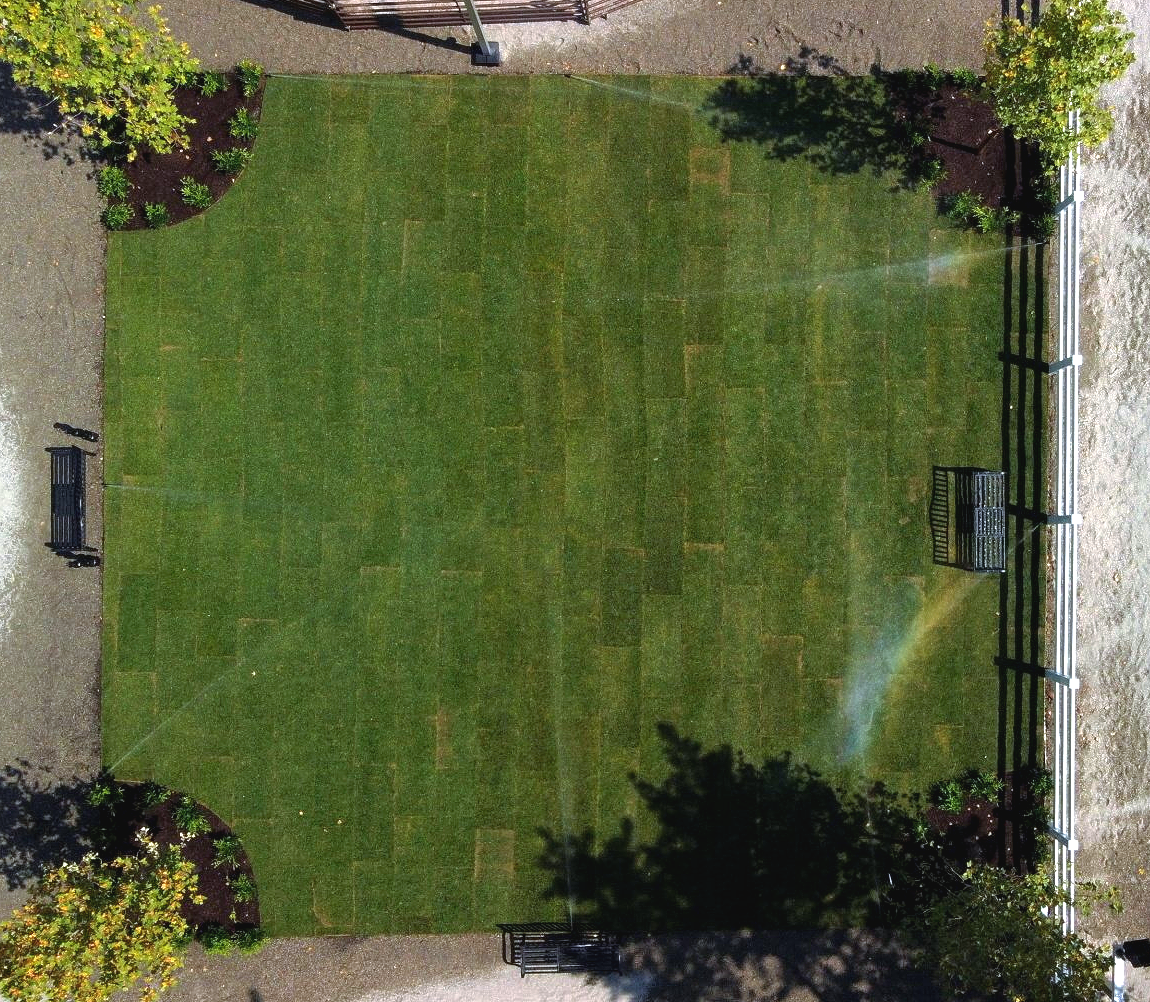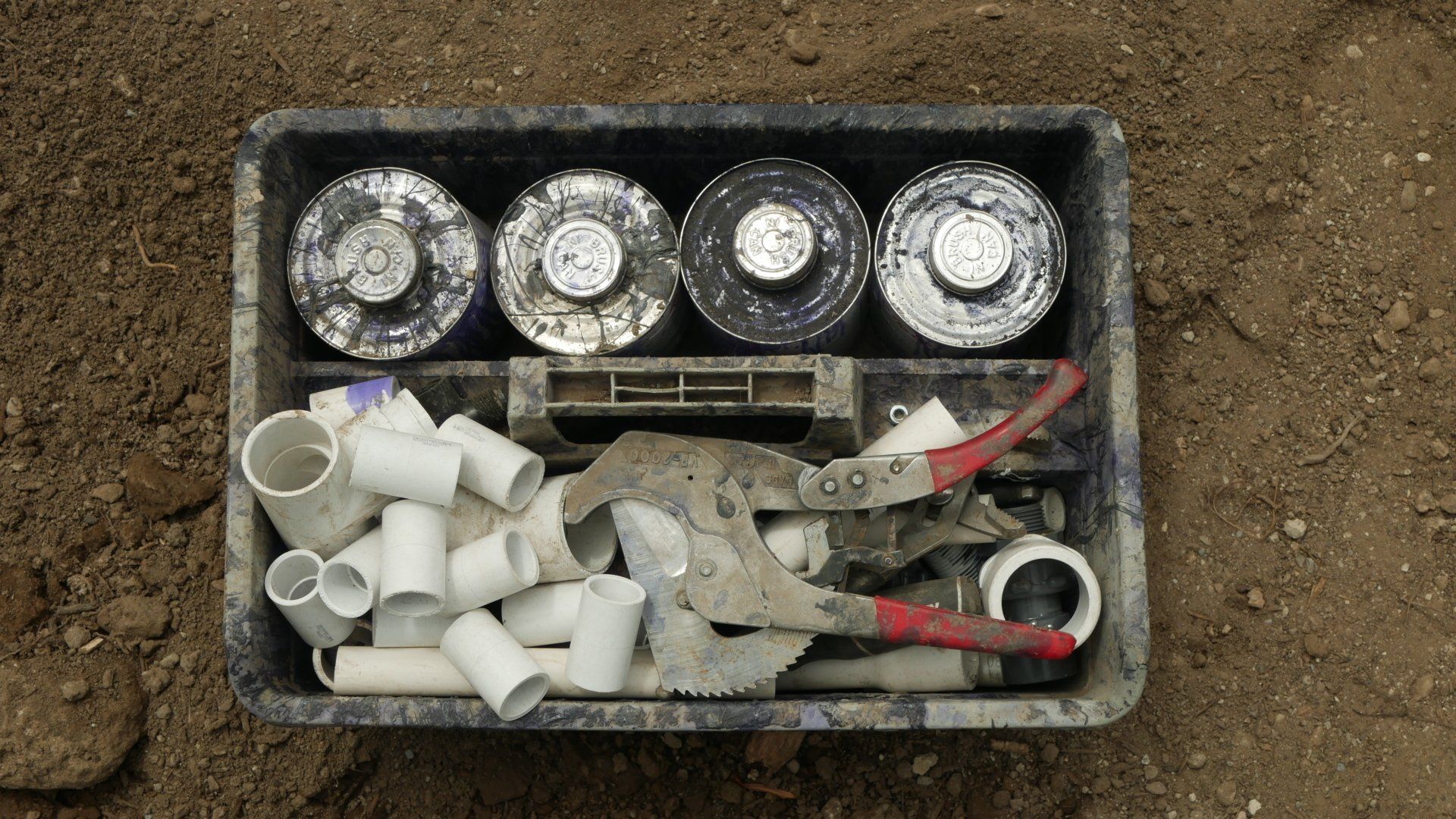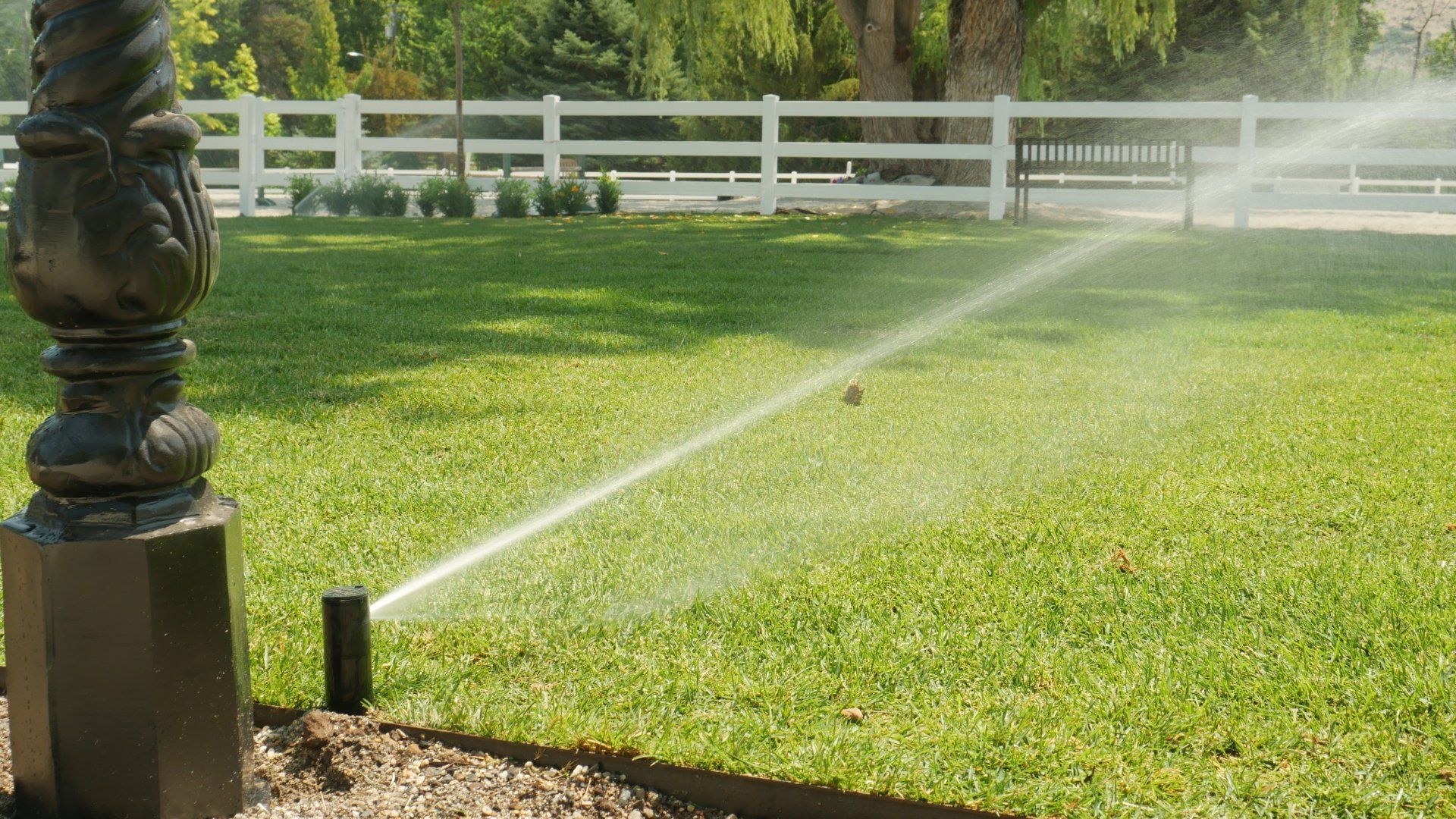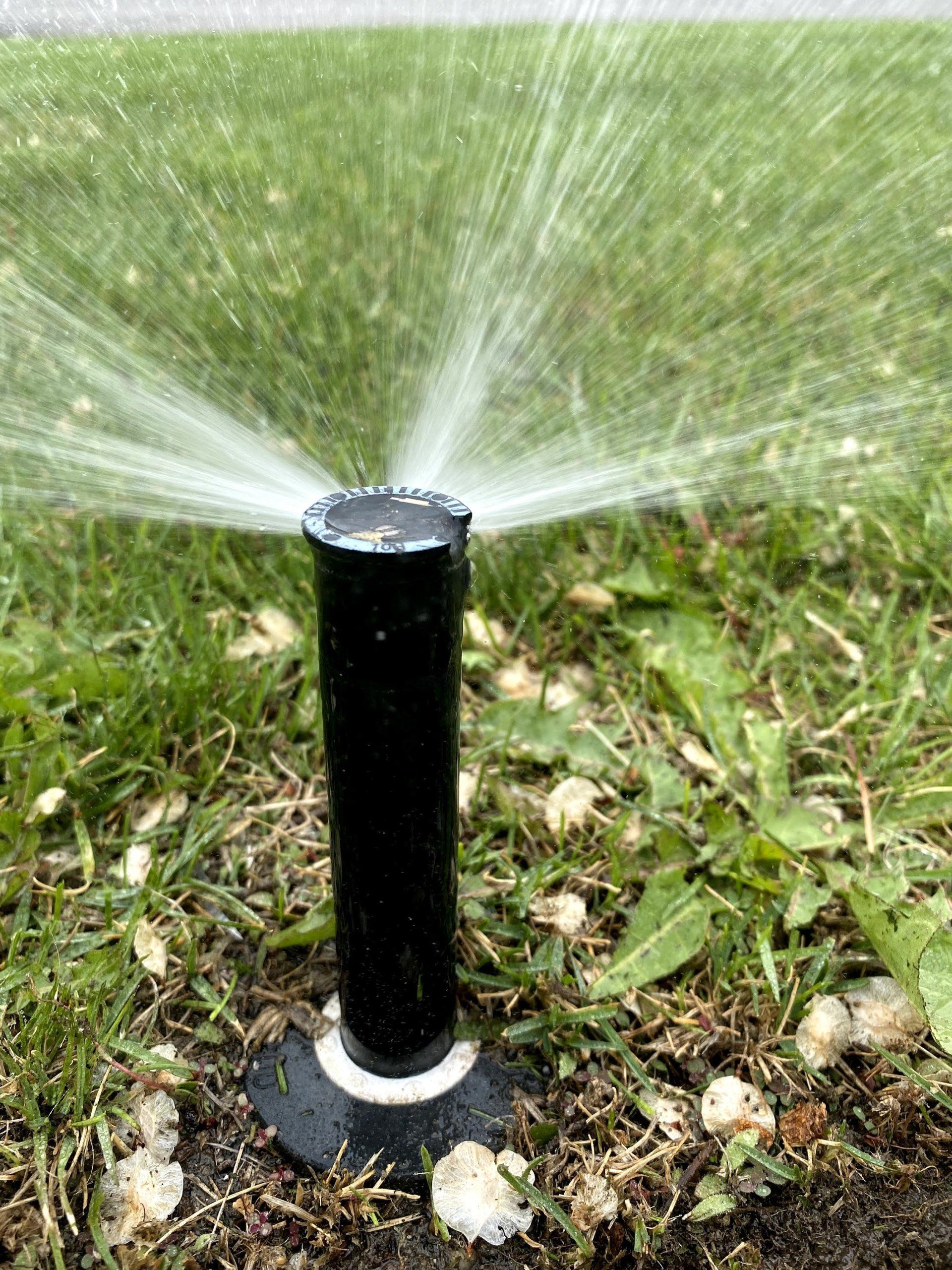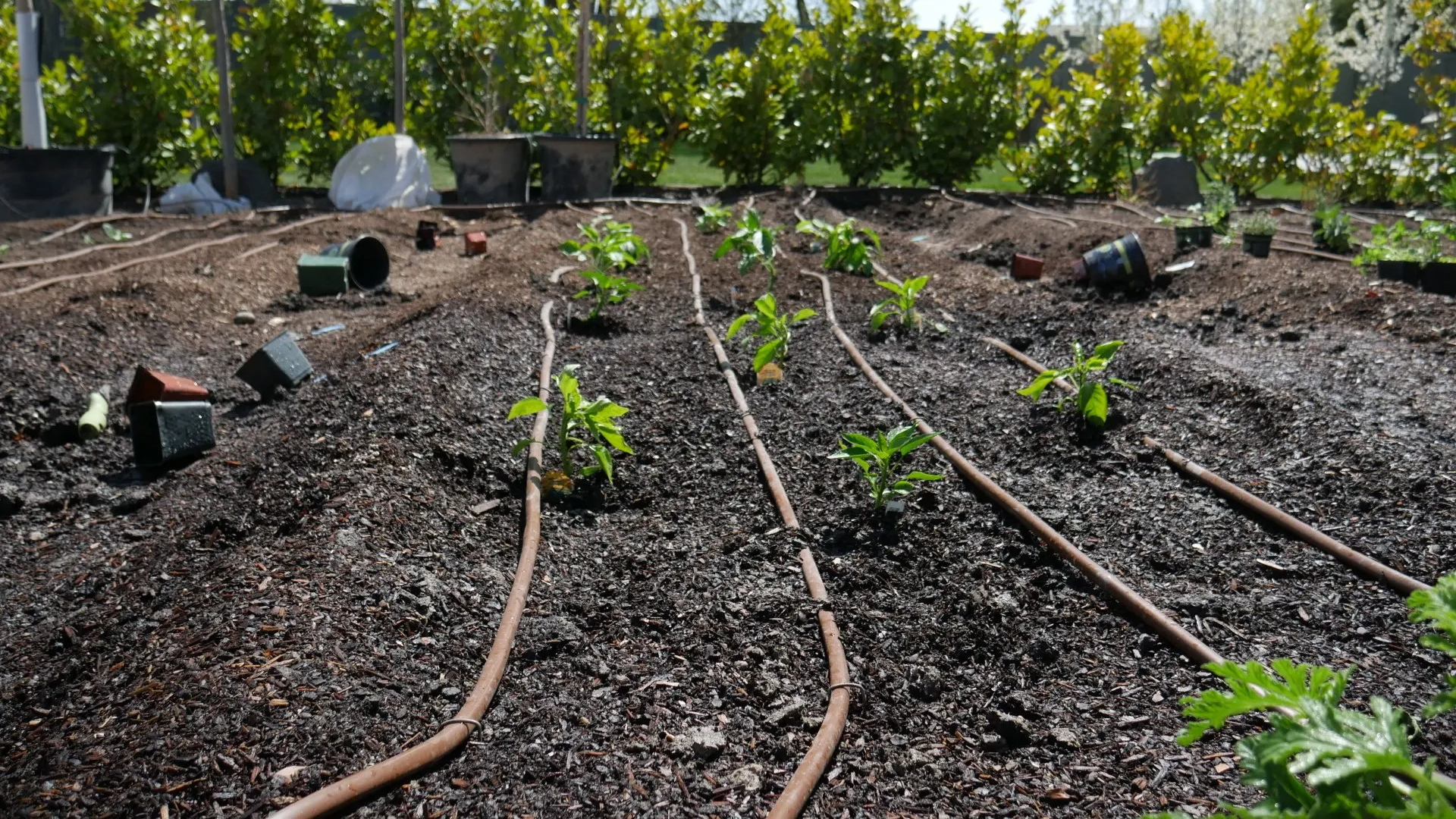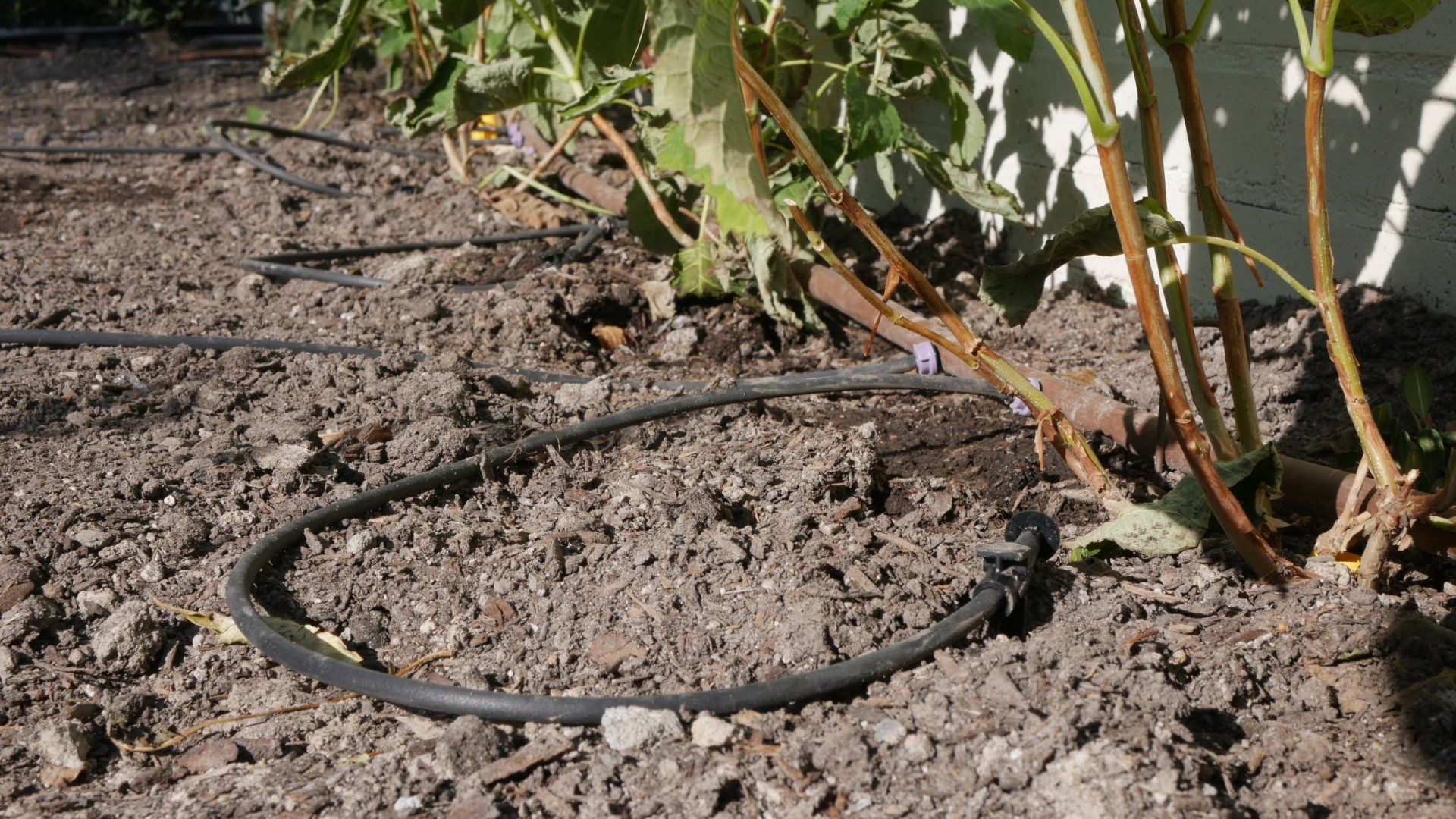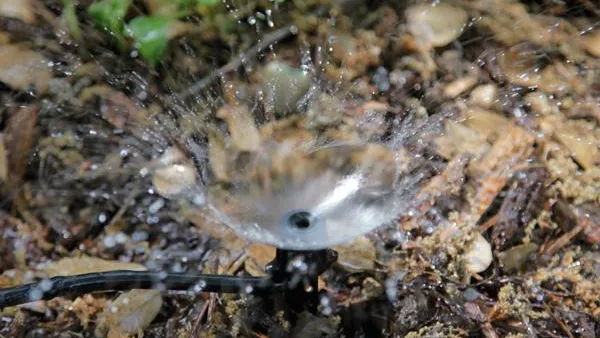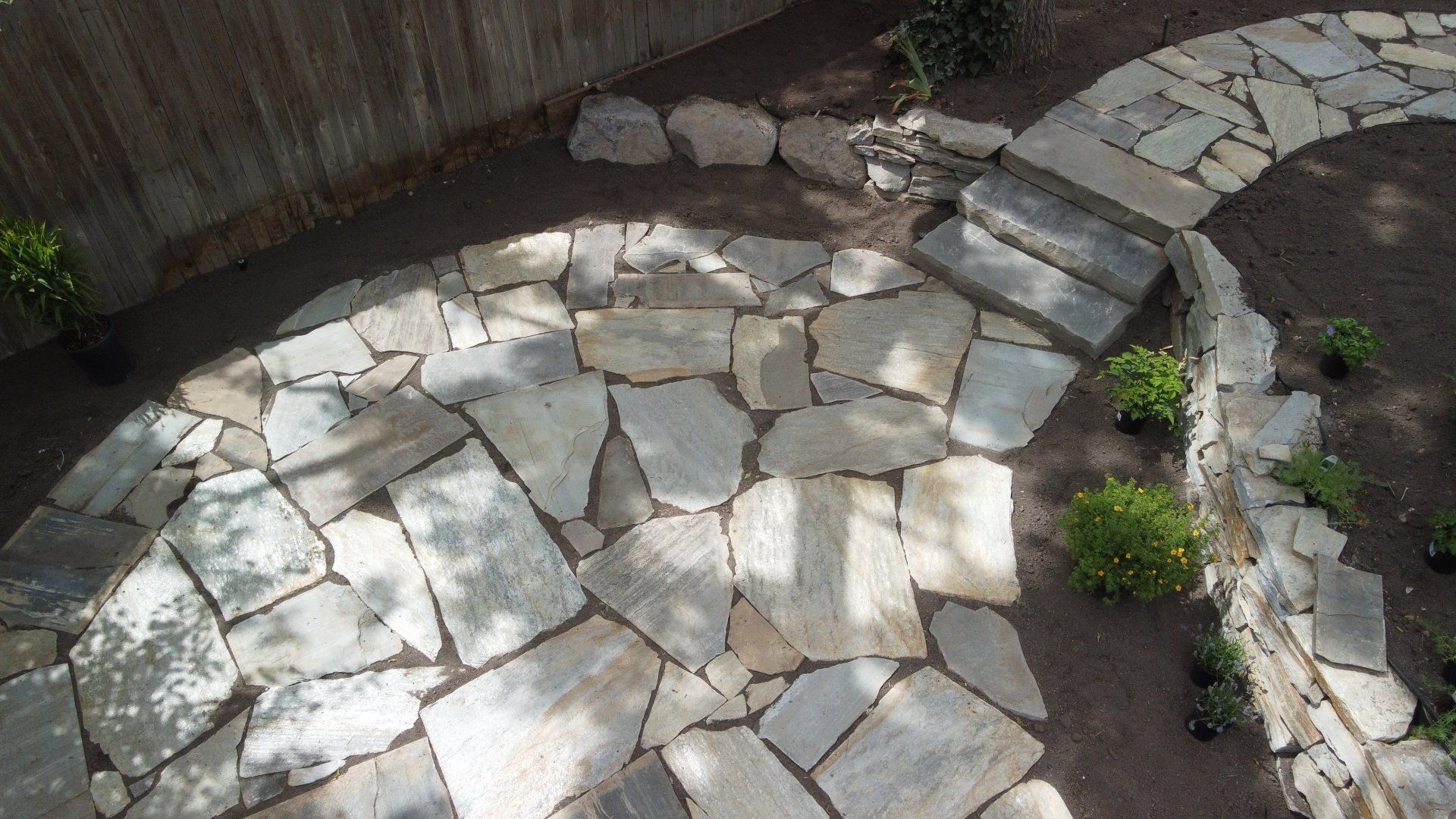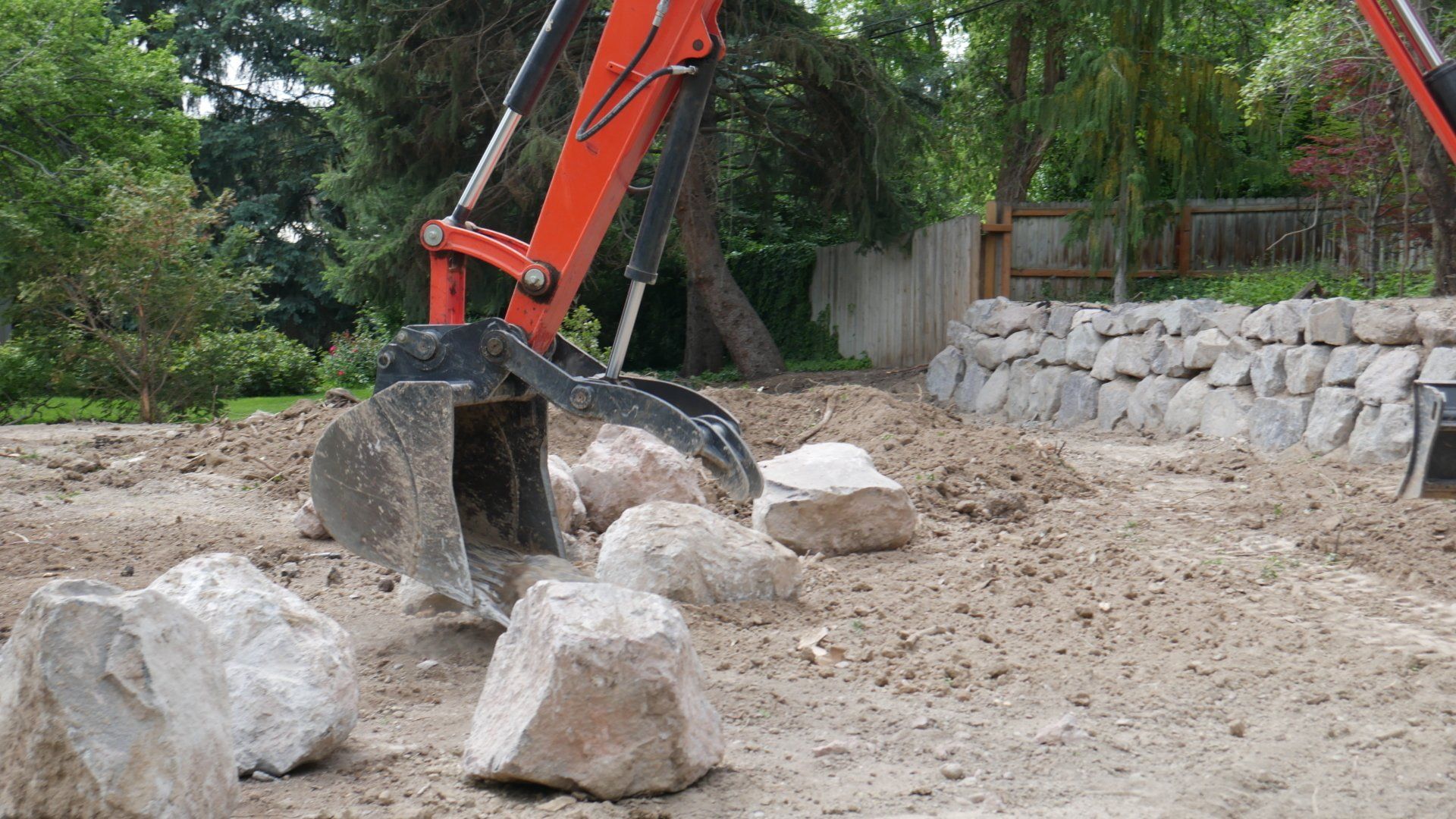The Grass is Greener...
Where it is Watered
Utah is the second driest state in the union! When it's growing season (May to October) our beloved plants, flowers, and vegetables need enough water not only to survive, but to thrive. Rasmussen Landscapes will ensure your plants stay watered and happy.
Quality - No Shortcuts
You need someone that understands the specifics of your landscape's watering needs. Keeping your plants healthy is our objective, and we won't compromise.
A properly designed sprinkler system is critical to function, ease of maintenance, and longevity of the system. With every new sprinkler system we install, we abide by the following guidelines for success.
Double Coverage
Sprinkler coverage needs to be reaching the next sprinkler head. That is, the spray of one sprinkler head needs to be reaching the adjacent heads around it. This will eliminate dry spots and ensure an even watering.
Valve Boxes
Our way of laying out sprinkler valve boxes is to put them together for ease of access. We don't want to hunt around the yard for sprinkler boxes any more than you do!
Expansion in Mind
We know that yards are constantly changing and evolving. We like to plan ahead and leave extra space in a sprinkler system for when those changes come along. It makes adding new sprinkler zones an extremely easy process.
Winter-Ready
Our cold winters in Utah can do a lot of damage to our sprinkler systems if we aren't prepared. We equip all our new sprinkler systems with the necessary features that make winterizing the system an easy and simple process.
Highest Standard
We only use commercial grade pipes, valves, sprinkler heads, and timers. With the heat we see during our summers in the desert, no yard can afford to go without the water it needs. Your sprinkler system needs to be reliable and ready at all times.
The Right Sprinkler
There are so many options when it comes to sprinkler types. But, as always, knowledge is key to making an informed decision. Knowing when to use a particular sprinkler only comes from decades working in the business.
Common Types of Sprinklers
Rotor Sprinkler
Rotor sprinklers have a long reach and are designed to cover very large areas covered in grass or other thick vegetation.
A mechanism in the sprinkler body rotates the sprinkler so that the single spray moves in a circular pattern, according to adjustments made at each sprinkler. This is how full coverage is achieved with a single stream of water.
These are great for spaces where all the ground needs is water, as opposed to parts of a yard that have sidewalks, patios, or other hard surfaces that don't need watering.
Pop-up Sprinkler
For areas that are smaller and that contain lots of plant material, popup sprinklers are the perfect solution. Unlike rotor sprinklers, pop-up sprinklers simply pop up from the main sprinkler body (buried in the ground) when pressurized by water.
The spray is an even pattern in a radius from the sprinkler in any pie-shape that the area requires. Common sprinkler spray patters are 360°, 180°, 90°, and 45°. Most applications are covered by these common spray patterns
When the watering is done, the sprinkler retracts back in to the ground and out of sight. This also ensures that the sprinkler does not get kicked or knocked over accidentally.
Dripline Sprinklers:
If what you need is an area that does not require a spray of water, but rather targeted watering, then driplines are what you need.
Driplines are thin tubing with small holes punched in about every 12 inches. When the tube is filled with water, the little holes drip out water, very slowly, to soak into the ground immediately beneath and around the dripline. This ensures that water is only getting to the plants that need it and nowhere else.
Typically, our irrigation team installs dripline irrigation in gardens and plant beds, but driplines can be used in any space where a spraying sprinkler is not a good fit for the application.
For example, if you have a hedge or row of plants right in front of a window, these plants need water but the house and windows should not have water sprayed directly on them. This is a perfect scenario for a dripline irrigation system. Water drips out of the holes along the line, watering just the soil around the plants and nowhere else! Our sprinkler installation teams are professionals in designing and installing dripline systems.
You know it's time for new sprinklers when...
- You are hand-watering any of your plants
- You have an old system that needs a modern update
- You are building a new yard
- You are putting in new sod
- You are adding new plants
- Plants aren't getting the water they need
For information on smaller jobs, sprinkler repair, spring startup, and fall shutdown, please see our sprinkler maintenance page
